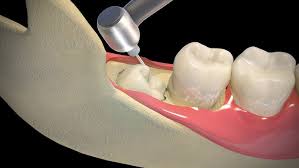Essential Cannabis Cultivation Tips for First-Time Growers

Ever thought about growing your own cannabis but didn’t know where to start? You’re not alone-many beginners feel both curious and nervous when they take the first step.
Maybe you want better control over what you consume, or you’re just looking for a new, rewarding hobby. Whatever your reason, this guide is here to help you avoid rookie mistakes and grow with confidence.
With the right tools and tips, even first-time growers can succeed. So, let’s dig in and turn your small idea into a thriving plant.
Choose the Right Seeds
Picking the right seeds is the first big step in your grow journey. Feminized seeds are best for beginners because they grow into bud-producing plants without needing to remove males. Autoflowering seeds are also a good choice since they switch from growth to bloom on their own.
Quality genetics can make a huge difference in the final plant. Some strains are bred to resist mold, pests, or heat, which helps in certain climates. If you’re not sure where to begin your search, you can buy cannabis seeds here.
Pick Your Growing Style
Indoor growing gives you full control over the environment. You can grow any time of year and adjust light, temperature, and airflow. This method needs gear like grow lights, tents, fans, and timers.
Outdoor growing is more natural and cost-friendly. Plants get sunlight and fresh air, but depend on the seasons and weather. You’ll need a private, safe spot that gets at least six hours of direct sunlight daily.
Use the Right Soil or Medium
Good soil makes a strong foundation for healthy cannabis plants. It should drain well, hold some moisture, and allow air to reach the roots. Look for organic potting mixes with perlite, compost, and coco coir.
You can also grow in coco coir or a hydroponic system. These give faster growth but need more frequent feeding. For beginners, rich organic soil is the simplest and most forgiving option.
Light Is Life
Light fuels your plant’s growth and bud production. During the vegetative stage, cannabis needs 18 hours of light each day. Once flowering begins, switch to 12 hours of light and 12 hours of dark.
LED lights are energy-efficient and produce less heat. They come in full-spectrum options that mimic natural sunlight. Proper lighting boosts plant size, strength, and overall yield.
Don’t Overfeed
Cannabis plants need key nutrients to grow-especially nitrogen, phosphorus, and potassium. Most beginners use bottled nutrient mixes made for cannabis, which are easy to measure. Always start with half-strength doses to avoid overfeeding.
Too much food causes leaf burn, yellowing, and slow growth. Underfeeding can stunt your plant and lead to weak stems or pale leaves. Watch how your plant reacts after each feeding and adjust as needed.
Watch Temperature and Humidity
Cannabis plants grow best in warm, stable environments. During the vegetative stage, aim for temperatures between 70°F and 85°F with higher humidity. In flowering, lower both the temperature and humidity to prevent mold.
Too much heat can stress plants and slow growth. Cold air may cause color changes and weak roots. Use fans, humidifiers, or heaters to maintain ideal indoor conditions.
Learn to Spot Problems Early
Checking your plants every day helps you catch problems before they get worse. Watch for curling leaves, yellow spots, or signs of pests like tiny bugs or holes. Early detection makes treatment faster and easier.
Mold and mildew can ruin buds if left alone. Keep air moving around your plants to prevent moisture buildup. Remove sick leaves right away to stop problems from spreading.
Start Small and Stay Simple
Starting with a few plants helps you learn faster and avoid mistakes. A small grow is easier to manage, especially when adjusting light, feeding, and watering. You’ll also save money on gear and supplies.
As you gain experience, you can add more plants or try advanced methods. Keeping it simple at first leads to better results. Focus on learning the basics before moving on to complex techniques.
Be Patient With the Process
Cannabis takes time to grow from seed to harvest. Most strains need at least three months, and some take longer. Rushing the process can lead to poor yields or underdeveloped buds.
Each stage-seedling, vegetative, and flowering-has its own care needs. Be ready to wait and check on your plants regularly. Patience pays off with stronger, healthier results in the end.
Use Clean Tools and a Tidy Space
Clean tools reduce the chance of pests or disease. Always wipe scissors, pots, and trays before and after use. Dirt and leftover plant matter can carry mold or harmful bacteria.
A tidy grow space keeps plants safe and growing well. Remove fallen leaves and spilled soil often. Good hygiene makes it easier to spot and fix issues before they spread.
Don’t Ignore the Smell
Cannabis plants develop strong odors as they grow, especially in the flowering stage. This can be a problem if you want to keep your grow private. Use carbon filters or air purifiers to control the smell indoors.
Smell can also attract pests or unwanted attention outdoors. Planting in a secure, discreet spot helps reduce risk. Always check local rules to avoid legal trouble over odor complaints.
Keep a Grow Journal
A grow journal helps you track your plant’s progress. Write down what you do each day-like watering, feeding, or light changes. Include photos to see how your plants change over time.
Noticing patterns can help you improve your next grow. If something goes wrong, you can look back and find what caused it. A journal is one of the best learning tools for new growers.
First-Time Growers: Grow Your Own Green Dream
Growing cannabis isn’t just about producing a plant- it’s about building a skill, a habit, and a deeper connection with nature. With patience and care, what starts as a simple seed can become something truly rewarding. Every grow teaches you something new, even if things don’t go perfectly as first-time growers.
As a first-time grower, your journey won’t be flawless-but that’s part of the fun. Keep learning, stay consistent, and soon you’ll have a harvest you can be proud of.
Was this article helpful to you? If so, make sure to check out our blog for more useful information and resources.


